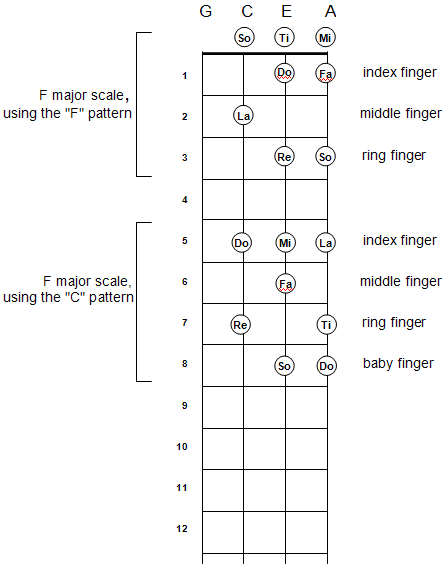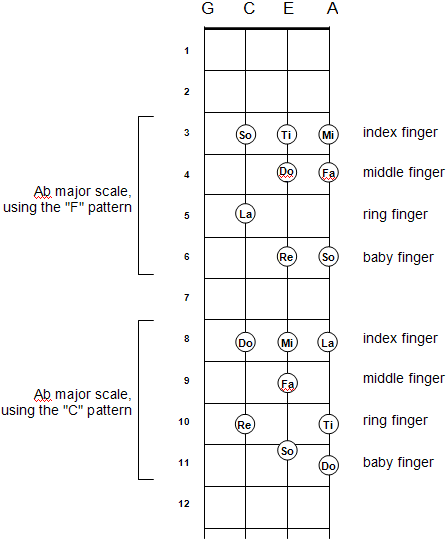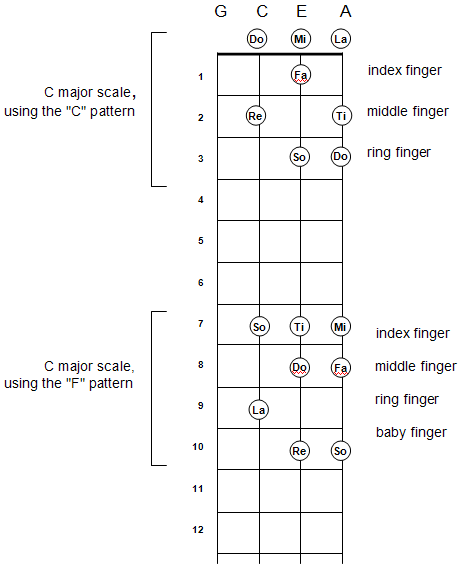|
Putting The Two Patterns Together
We saw before that we can use two different patterns to play the F major
scale: the "F" pattern starting on the zero fret, and the "C" pattern
starting on the fifth fret. Let's look at both those patterns on
the fretboard, and how they relate to each other.

And you'll have a similar pair of patterns for the major scales in
any other key. Of course, the fingering for the "F" pattern scale
will be different when you move this pattern up the fretboard for another
key: it'll be fingered like we did with the G scale. Remember
that?
For example, move everything up three frets and you'll have an Ab (or
G#) scale:

Just as there is a "C" pattern above the "F" pattern, there is also
an "F" pattern above the "C" pattern. Consider the C major scale:
if you take the "F" pattern and move it to the seventh fret, it becomes
a C major scale. So let's put both versions of the C major scale
on the fretboard.

Notice that there's more space from the "C" pattern to the "F" pattern
than there was from the "F" pattern to the "C" pattern on the previous
figure (four frets up rather than two). The spacing makes sense
when you see that, in the last figure, the note "Re" is on the "A" string
fifth fret, so you're just going up the scale (La, Ti, Do, Re, Mi, Fa,
So) on that "A" string.
|


